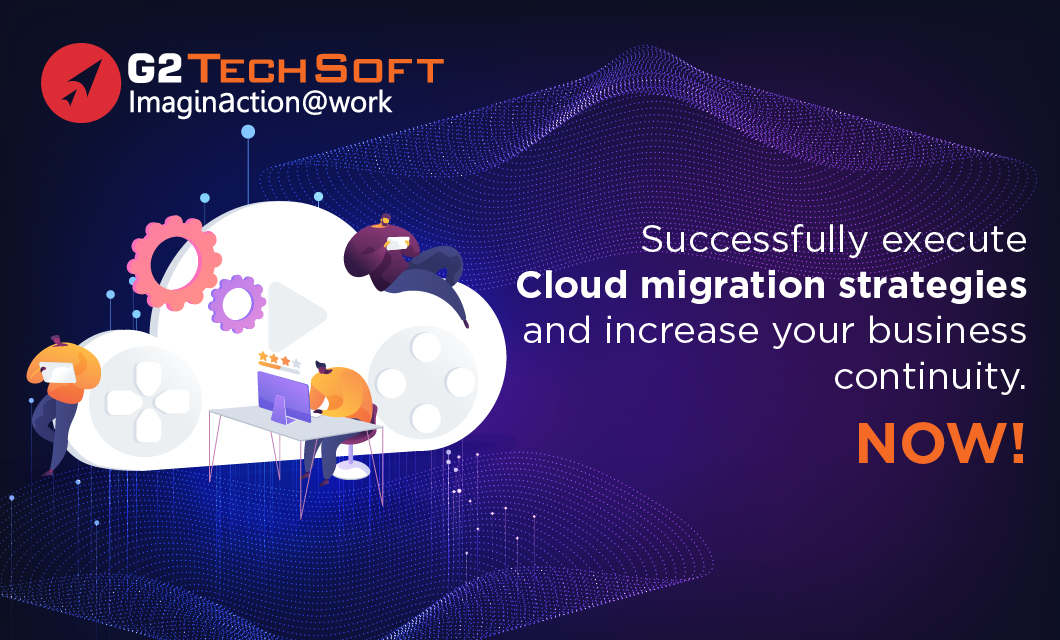
Most IT professionals favor adopting cloud based services for business profits and outgrowth. This trend has accelerated enormously in the last one year owing to rapid REMOTE WORKING decisions and innocent acceptance of innovations.
Cloud Connection and why Covid19 has emerged or accelerated business to this cloud migration?
The pandemic era has definitely hampered personal and professional sectors widely. Adversely, it created an alternative to working environments in the IT sector bringing a new concept unknowingly.
The most popular Covid-19 impact, remote working for the organization was not pre-decided yet we adapted this cloud migration strategy in less time to meet regular business requirements. Even top IT brands like Amazon, TCS, Google, and more are suggesting wide extensions in Work from Home strategy even post Covid-19.
Work from Home is a functional strategy that isolates employees but remote resources like VPN connections, desktop storage, and on-premises IT infrastructure does not count well with business growth. Major IT leaders have strong complaints related to disruptions, outages, network strain, less usage of collaborative utilities, low productivity, and storage issues while working remotely in the starting half of the pandemic year 2020. A cloud connection is required!
With the increase in the number of remote workers as Covid-19 is not nearby its end, the data security concerns have increased which are swiftly manageable by deploying cloud based security services.
Also, Cloud-based computing has become an essential integration to allow access to complex applications and inducing scalability to small and medium scale businesses while working remotely.
Over the past few months, many self-aware IT companies have realized the importance of the Cloud based infrastructure with Remote working and currently deploying it on the respective Cloud based server. According to statistics, the deployment of hybrid cloud solutions including hybrid Cloud security solutions and hybrid Cloud networking has increased about 55% from the beginning of the pre-pandemic year (2019) to the first quarter of the pandemic year (2020). This accelerated business continuity in the Cloud is a positive impact of Covid-19 by the IT industry and professionals to flourish businesses and increase security with a Cloud-based solution.
Potential cloud migration risks for business in the current situation
The pandemic era has definitely hampered personal and professional sectors widely. Adversely, it created an alternative to working environments in the IT sector bringing a new concept unknowingly.
The most popular Covid-19 impact, remote working for the organization was not pre-decided yet we adapted this cloud migration strategy in less time to meet regular business requirements. Even top IT brands like Amazon, TCS, Google, and more are suggesting wide extensions in Work from Home strategy even post Covid-19.
Work from Home is a functional strategy that isolates employees but remote resources like VPN connections, desktop storage, and on-premises IT infrastructure does not count well with business growth. Major IT leaders have strong complaints related to disruptions, outages, network strain, less usage of collaborative utilities, low productivity, and storage issues while working remotely in the starting half of the pandemic year 2020. A cloud connection is required!
With the increase in the number of remote workers as Covid-19 is not nearby its end, the data security concerns have increased which are swiftly manageable by deploying cloud based security services.
Also, Cloud-based computing has become an essential integration to allow access to complex applications and inducing scalability to small and medium scale businesses while working remotely.
Over the past few months, many self-aware IT companies have realized the importance of the Cloud based infrastructure with Remote working and currently deploying it on the respective Cloud based server. According to statistics, the deployment of hybrid cloud solutions including hybrid Cloud security solutions and hybrid Cloud networking has increased about 55% from the beginning of the pre-pandemic year (2019) to the first quarter of the pandemic year (2020). This accelerated business continuity in the Cloud is a positive impact of Covid-19 by the IT industry and professionals to flourish businesses and increase security with a Cloud-based solution.
Potential cloud migration risks for business in the current situation
Migrating into Cloud is the budding choice of IT organizations impressed by its fascinated benefits such as anywhere accessibility, efficient cloud based solutions, reduced overall costs, multi-region infrastructure setup, data security with Cloud-based disaster recovery, and Cloud-based backup services, control over multiple administrative tasks, and more. All these potential benefits with Cloud data migration are great in demand with the current remote working scenario for business growth but not completely free of risks.
Rather while the majority of IT organizations have decided to go for the Cloud based systems yet about 90% of them are finding complexities in its deployment. The Cloud migration challenges for business in the current scenario are stated here.
- Compliance requirement is a big challenge while deploying Cloud-based storage solutions for Cloud-based document management as your current business may include confidential data that you cannot store on a Cloud-based platform owing to certain obligations.
- Shortage of resources makes it tough to adopt Cloud-based infrastructure completely as both skilled Cloud specialists and data center migration methodology is not available at times leading to failures in Cloud ERP migration, complexities in Cloud based application development, left with hybrid Cloud migration as the last option for developing customized Cloud based software applications.
- Outages with a poor network connection cannot be tolerated by businesses moving to Cloud. Downtime due to Cloud-based server hosting degradation might affect the business resiliency and prove great risks to data online.
- Security of Data is another concern as apart from Cloud based applications, Cloud-based software, or Cloud based database, there is a need to encrypt your On-premises infrastructure applications, data, or servers especially with data center migration to Cloud.
- Networking Cost is an additional cost for businesses with Cloud-based networking that comes as the Bandwidth cost for data-intensive applications while setting up Cloud-based network management to your businesses.
What will be a successful cloud migration strategy?
After making the prime decision of Cloud migration from your current on-premises business infrastructure, you are required to be well-prepared to eliminate all potential risks related to it.
Let us know some factors crucial for a successful cloud migration strategy.
Controlling Data:
It is important to secure your data beforehand when going for enterprise hybrid Cloud or complete Cloud migration and ensure it throughout the migration. Adopt beneficial practices like data classification (public, private, restricted, and classified data), data access policies, authentication, and tracking of data even after migration, deploying regular Audits for data security.
Deciding Cloud Migration Strategy:
Have a clear picture of the end objectives of the Cloud migration, check the current condition, and know all possibilities related to Cloud data migration services, Cloud-based business software, etc. in your approach.
Pre-Checking Resources for Migration:
Get prepared with resources for application migration, data sharing, and know security concerns in advance. You need to get complete information about your merging Cloud-based application, Cloud-based operating system, and can add data-level protection knowing that Cloud based security services are accessible only on a Cloud based platform.
Coming Up with a Migration Plan:
Create an organized Cloud migration plan into a flowchart with defined resources, objectives, migration type (complete or hybrid cloud migration), and planned cloud migration strategy for orientation.
Choosing Suitable Cloud Service Provider:
If you want to go with Standards, then you select any from AWS migration, Google Cloud migration, or Azure migration. All these Cloud-based platforms are protected with TLS encryption and deliver top-class Cloud-based business solutions. You can add data protection to increase flexibility with third-party vendors too.
Test & Execute Cloud Migration:
With collected resources, strategy, migration plan, Cloud migration services, and all, you can head to test the Cloud migration process from the present infrastructure to Cloud to check if everything is well. After a short test, perform the final Cloud migration steps for a successful Cloud migration!
Cost Comparison for cloud migration services
Getting an accurate answer for Cloud costs cheaper or expensive than the current business is somewhat tricky. About 60% of Cloud migrated businesses feels it expensive to run their Infrastructure in Cloud. Due to a lack of knowledge about payment models of Cloud infrastructure and a lesser understanding of current business financial models, complexities like the sense of high infrastructure costs even with clear monthly subscriptions of Cloud can arise. So, there is a need to understand the financial and payment models for both infrastructures first before making comparisons.
The best way to estimate business Cost post Cloud migration service is utilizing the Cost Calculator tools provided by Cloud migration service providers – AWS Pricing Calculator while opting for AWS migration services and Azure Pricing Calculator for Microsoft Azure migration services. This real-time cost can be compared with the current On-premises infrastructure costs helpful to understand the business financial models too.
G2, Being one of the best offshore Cloud migration companies for outstanding Cloud infrastructure and migration services once you are all ready to move your On-premises infrastructure to a Cloud platform.
Winding Up
We covered all aspects involved with business continuity in the Cloud, outcome of the great impact of the current Covid-19 forced remote working environment. It cleared the major suspicions and queries in the mind of On-premises business tempting to Cloud migration. With that thought, we hope for a safe and profitable Cloud migration to the seekers!




